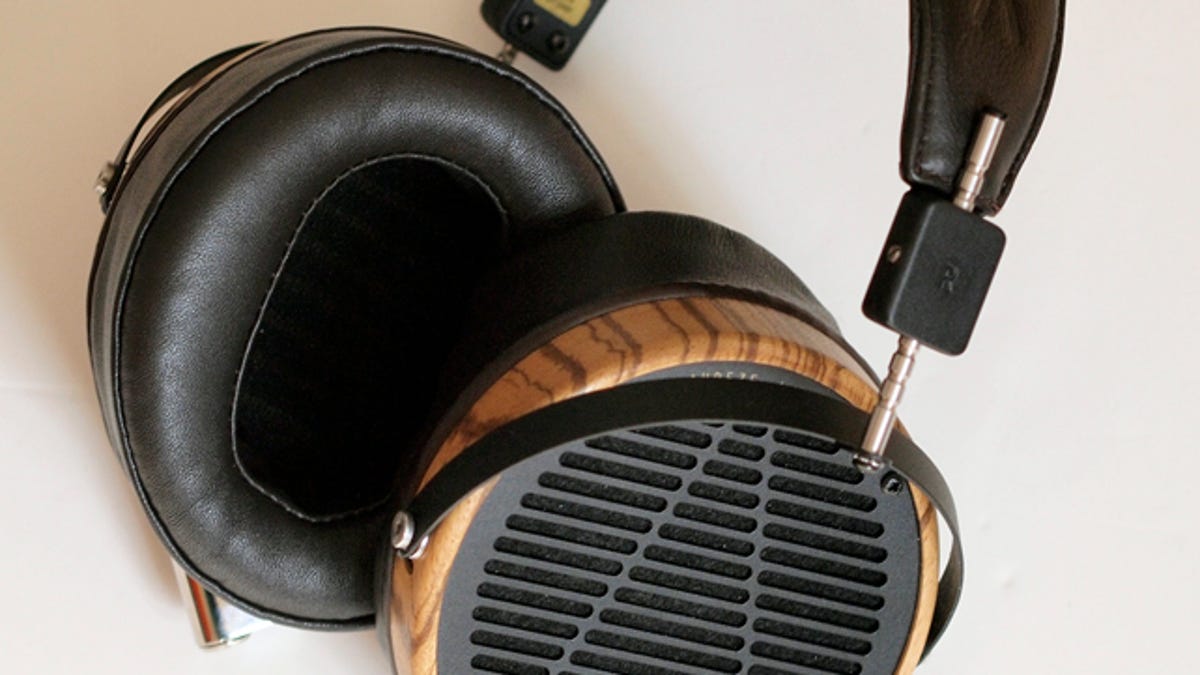The best headphones in the world?
Audeze LCD-3 headphones are made in the U.S.A., and like the best cars, clothes, and everything else high-end, they're expensive.

I've written about the Audeze LCD-2headphones in this blog before, but now I'm going to cover the LCD-3 model, Audeze's best headphones. At first glance the two don't look all that different, but the LCD-3s sport real zebrawood earcups and have thicker and softer real lambskin leather cushions to coddle your ears. This is a fairly heavy (550-gram) set of headphones, but they're comfortable to wear for hours at a time. Details of why the LCD-2s and LCD-3s sound different aren't forthcoming from Audeze, other than the drivers, which use similar technology, are different. I can't say the two sound hugely different, but the LCD-3s are definitely more transparent and clear. Are they worth double the price? No, the LCD-2 model remains in the line and gets you 80 percent of the LCD-3's sound, but if you want the very best, get the LCD-3s.
Rather than use standard headphone drivers that operate like miniature woofers or tweeters, the LCD-3s, like the LCD-2s, use a large, 6.17-square-inch thin-film planar magnetic driver to make sound. The Audeze circular flat diaphragm is sandwiched between rows of neodymium bar magnets. When audio signals pass through the diaphragm it moves in and out to produce sound, but thanks to its large size and superlow mass the planar magnetic drivers generate significantly lower distortion than conventional headphone designs. The LCD-3's headphone cable is detachable, via locking connectors, and is therefore user-replaceable.
During the course of the review I brought the LCD-3s to a recording session to use as monitors, and they blew my mind. As impressive as they were at home -- and they are exceptional -- it was great to have the opportunity to hear the sound of a blues band playing live in the studio, and then hear their music over the LCD-3s. I have never heard a set of headphones that got even remotely close to the sound of live music the way this one does. To put the LCD-3's sound in perspective, I borrowed the engineer's Sennheiser HD 650 headphones ($650), and it was really shocking how much better the LCD-3s were. The HD 650 is a great set of headphones, but it sounded small, thin, dynamically compressed, and its stereo imaging was relatively flat next to that of the LCD-3. Both headphones were played with the same Grace Design m901 headphone amplifier.
The engineers and musicians at the session all took turns checking out the LCD-3s, and they were all knocked out by the sound. They weren't audiophiles, but they all heard the difference great headphones can make.
Back at home I used Schiit Lyr and Hifiman EF6 (review in the works) headphone amps for the bulk of my listening tests. The LCD-3's dynamic punch is simply the best I've heard, bass definition and power are phenomenal, stereo imaging is remarkably open and spacious. No dynamic headphone at any price comes close to the LCD-3's sound. Some audiophiles think the Stax SR-009 ($5,250) is the best sounding headphone on the market; I don't agree. Yes, it's even more transparent and clear, but the SR-009 lacks the LCD-3's power, dynamics, natural midrange, and potent bass.
What's the ultimate headphone amplifier for the LCD-3? That honor goes to Ray Samuels' Dark Star balanced amp. I briefly had it at home, and its brute-force dynamic impact, out-of-head imaging, and transparency all improved the sound of the LCD-3s. I also love the design; the Dark Star is a drop-dead gorgeous, handmade amplifier.
The LCD 3 headphones are available directly from Audeze for $1,945, or from its worldwide dealers.

